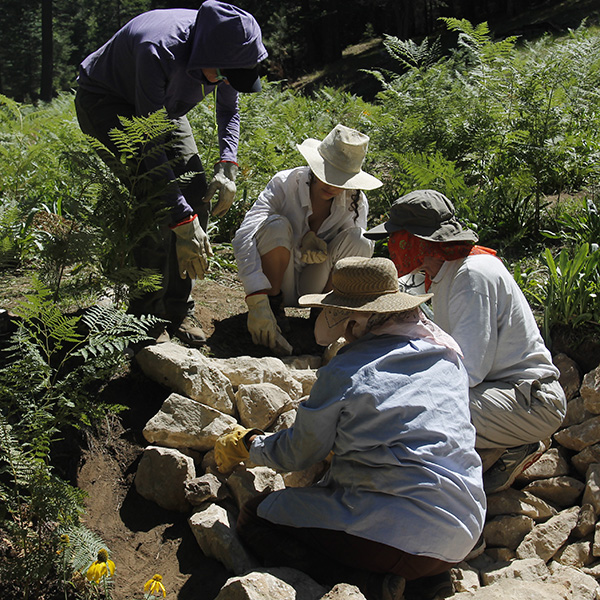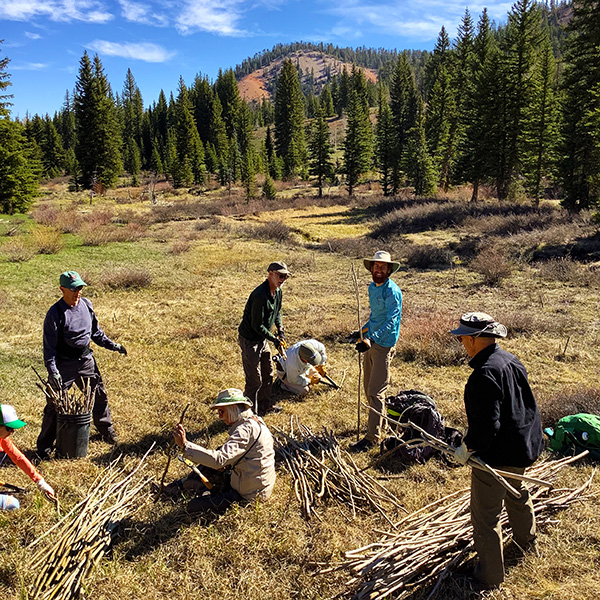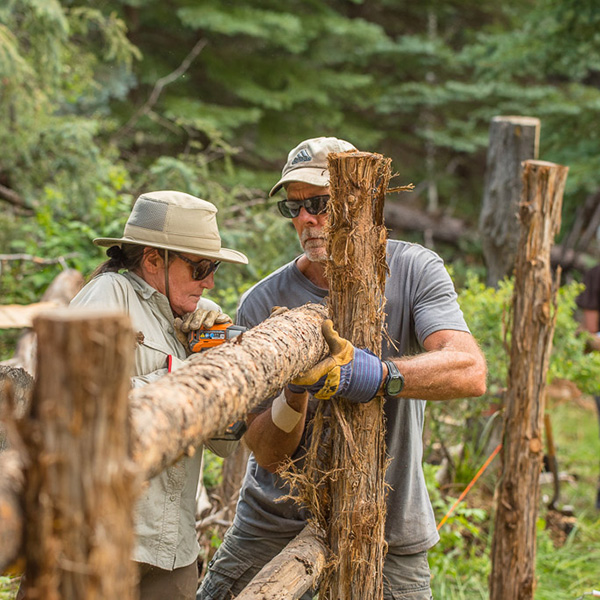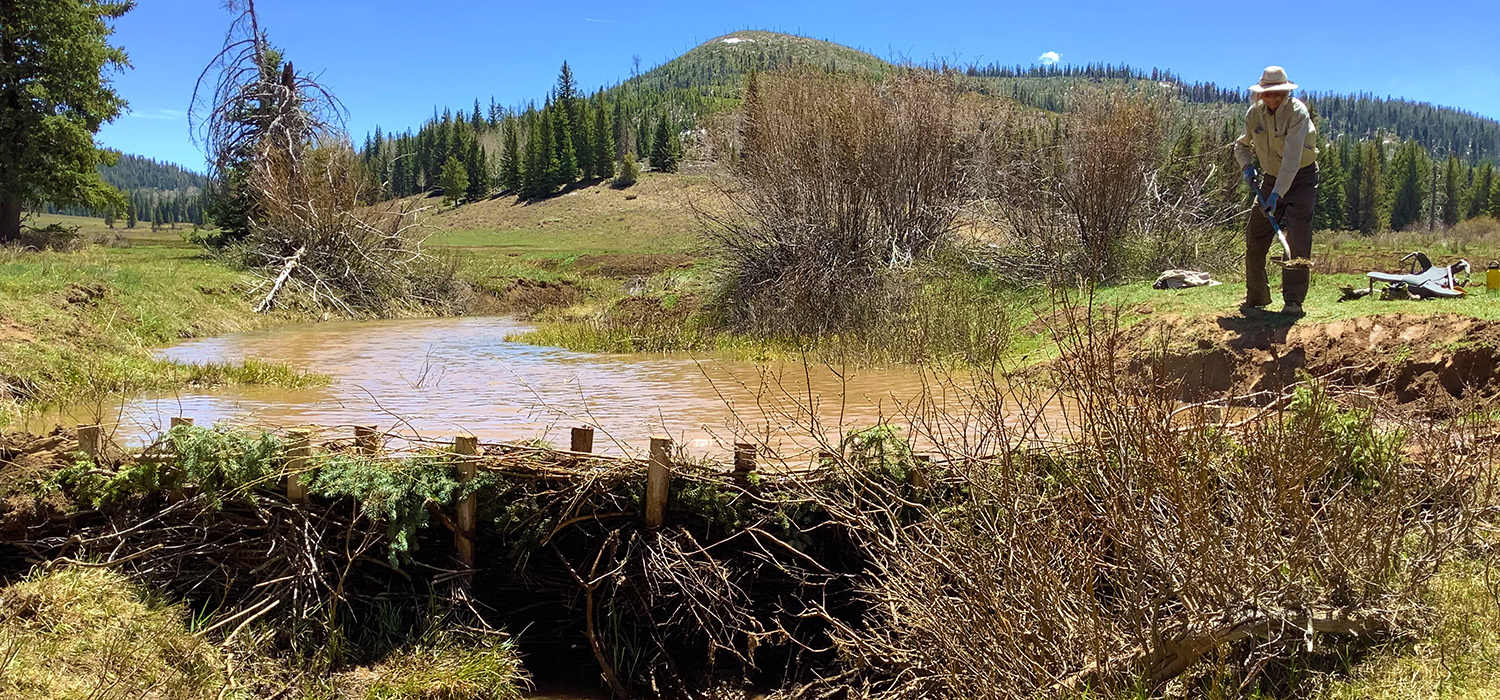Protecting streams and wetlands is key in supporting more resilient forests, especially as the climate warms. These small but vital water sources help wildlife and plants flourish and bring moisture to fire-prone forests. Drought, heavy livestock grazing, wildfire, and flash floods take a heavy toll on streams across the Colorado Plateau, but the good news is that with a little bit of care, degraded streams can recover in a few years.
With work gloves and strong backs, volunteers move rocks, fix fences, and plant native species. We return to our sites to monitor conditions and see our lasting impacts.

Rock structures stabilize eroding banks, slow water flow, and create pools essential for plant and animal life. Find out how volunteers restore Arizona wetlands with rocks ›

By planting willows, we help provide shade and cover for fish, prevent erosion of stream banks, and provide habitat for beavers, birds, and other animals.

Volunteers build fences to keep cattle and other heavy grazers, like elk and deer, from trampling fragile aquatic habitats.

Beavers are savvy water engineers. We replicate their work by building look-alike dams. These structures slow stream flows, create wetland habitat, and set the stage for future beaver reintroductions.
The federal government will determine if the charismatic blue bird should be listed as threatened or endangered.
Read MoreWe can’t wait to meet you in a canyon, along a creek, or in the high alpine meadows of the Colorado Plateau.
Read MorePronghorn and barbed wire fences don't mix, but volunteers are working to change that, one wire at a time.
Read More